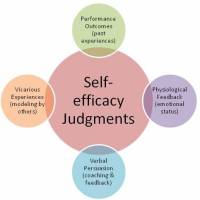Mentoring finds me observing lessons from a new perspective, watching from the back of the room to see what class is like from a student’s point of view. My observations are fully focused on our brilliant trainee, until that is I realise that the border on the notice board is half torn off, or that a part of the whiteboard hadn’t been erased, or my rooms untidiness (not my fault might I add) is distracting me. It was during one of these distractions that I was reminded of cognitive load theory.
Based on the work of Sweller (1986), cognitive load is the amount of information that our working memory can process before it is either embedded in the long-term memory or lost to accommodate new incoming information. Our brains must divide our mental capabilities in multiple ways:
- The intrinsic load is the innate difficulty of the task we’ve been asked to do. The more complex the activity in front of us is, the more of our cognitive load allowance we must spend to fully be able to process the task at hand. I am an uncoordinated human being; learning to juggle would be significantly more difficult than someone who already has a good level of hand-eye coordination.
- The extraneous load is anything that distracts us from thinking about the task. These are the barriers that make managing the intrinsic load more difficult. Trying to learn to juggle is already hard enough, but trying to learn in an environment that doesn’t enable me to give it my full attention, e.g. a noisy room, will make it far harder. If too much of my cognitive allowance is spent on dealing with the barriers to learning, then I will have little remaining to be able to deal with the task at hand.
Using existing knowledge can help reduce the resources needed to process new information. Learning to juggle would be easier if could already throw and catch a ball. As teachers we use various methods to support this, but some strategies I have been focusing on have been outlined below.
The “part-whole approach”
The ‘part-whole approach’ is where the teacher breaks the task down into a series of sub-tasks, and focuses on solving each sub-task before eventually bringing them together. Particularly useful for practical lessons where rather than give the students instructions on how to carry out the practical, the practical is divided into much smaller, manageable activities, and students are more able to see how the chunks coalesce together to form the overall practical outcome.
Greater use of worked examples as a scaffolding tool.
I was already sold on the idea of modelling my thinking and showing my metacognitive strategies when doing work in the classroom. I would often solve a question on the board and get the students to copy it down to have “a perfect example”. However now I have increasingly started to use my examples as a scaffold into their own examples that use mine as a template rather than exemplar. Doing the example and explicitly telling students not to copy it down. Upon moving onto the next example, ask students ‘what aspects of my previous example links to this new one? What would I need to change?’ This gradually increases independent problem-solving and difficulty. Also, the use of dual coding eases the load on students when applying the strategy to a task solely completed by themselves.
Conscious use of dual coding
I often rely on a lot of whiteboard modelling, and concrete examples to teach my students new concepts, but now I have started to ensure that the slides have these visual references and prompts on them. Not only do I spur my brain into a line of metacognitive questioning, but also ensure that I am allowing the students to reference and retrieve their previously used schemas. However, care must be taken to ensure my slides do not cognitively overload by having too much information or visual cutter.
Dylan Wiliam long ago tweeted that he had ‘come to the conclusion Sweller’s Cognitive Load Theory is the single most important thing for teachers to know’. Managing that load as teachers to helps our students receive the knowledge that we are trying to impart (and maybe helps me to learn to juggle).
Fahim Rahman is a Science Teacher at Durrington High School. He is also a research school associate for Durrington Research School









